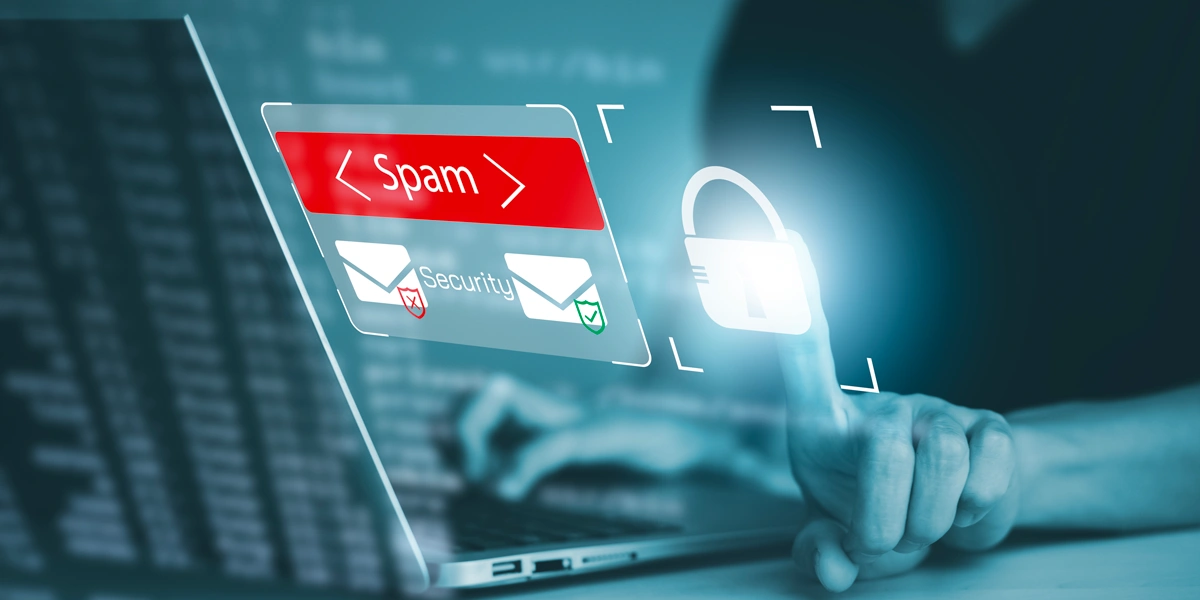
Email remains a cornerstone of communication across businesses and individuals in today's interconnected digital landscape. However, the prevalence of cyber threats emphasises the critical need for robust email security measures. Secure/Multipurpose Internet Mail Extensions (S/MIME) stands as a potent solution, redefining email security by providing encryption, authentication, and integrity verification. Let's delve deeper into S/MIME to understand its significance in fortifying modern communication channels.
Understanding S/MIME
S/MIME, which stands for Secure/Multipurpose Internet Mail Extensions, constitutes a cryptographic protocol designed to bolster the security of email communication. At its core, S/MIME operates through a robust framework of encryption, digital signatures, and certificate-based authentication, aiming to fortify the confidentiality, integrity, and authenticity of exchanged emails.
This protocol utilizes asymmetric encryption, employing pairs of public and private keys to secure the contents of emails. Public keys, distributed widely, enable the encryption of outgoing messages, rendering them unreadable to anyone without the corresponding private key. Conversely, digital signatures are generated using the sender's private key, validating the authenticity of the message and confirming that it hasn't undergone unauthorized modifications during transit.
S/MIME's reliance on Certificate Authorities (CAs) such as eMudhra, plays a pivotal role in establishing trust between communication endpoints by issuing digital certificates that validate the identities of senders and recipients. These certificates serve as a digital stamp of authenticity, verifying the association between email addresses and their respective public keys, reinforcing trust in the integrity and origin of emails traversing the network.
Key Components and Functions
-
Encryption: S/MIME employs a sophisticated mechanism known as public-key encryption to fortify the security of email content. This encryption process involves two keys: a public key for encryption and a corresponding private key for decryption. When a sender initiates an email, S/MIME uses the recipient's public key to encrypt the message content. This encryption renders the message unreadable to any unauthorised individuals intercepting the email.
-
Digital Signatures: S/MIME enhances email security by incorporating digital signatures, a critical aspect of authentication and integrity verification. When a sender employs S/MIME to send an email, the message is signed using the sender's private key. This digital signature serves as a cryptographic stamp, validating the authenticity of the sender's identity. Furthermore, recipients can verify the signature using the sender's public key, ensuring that the message hasn't been tampered with or altered during transmission.
-
Certificate Authorities (CAs): In the S/MIME ecosystem, trusted Certificate Authorities (CAs) play a pivotal role in establishing and maintaining trust among communication endpoints. CAs issue digital certificates that serve as electronic credentials, validating the association between public keys and the identities of email senders and recipients. These digital certificates function as trust anchors, asserting the legitimacy of the public key-owner relationship. When a recipient receives a S/MIME-secured email, they can verify the sender's identity by referencing the digital certificate issued by a trusted CA.
Advantages of S/MIME
-
Enhanced Confidentiality: S/MIME's encryption mechanisms are instrumental in preserving the confidentiality of sensitive information exchanged via email. By employing strong encryption algorithms, S/MIME ensures that the content of emails remains encrypted during transmission. This encryption renders the information indecipherable to unauthorised entities or potential eavesdroppers, significantly reducing the risk of interception or access by malicious actors.
-
Authentication and Trust: S/MIME's utilization of digital signatures plays a pivotal role in authenticating the identity of email senders and affirming the integrity of transmitted messages. Through the use of sender-generated digital signatures, recipients can verify the authenticity of the sender's identity. Moreover, these digital signatures ensure that the email content remains unaltered from the moment of sending to receipt, minimizing the risk of phishing, spoofing, or tampering attacks.
-
Regulatory Compliance: S/MIME's robust security features assist organizations in adhering to stringent data protection and privacy regulations. By providing a secure framework for handling sensitive information within emails, S/MIME aids companies in meeting regulatory requirements related to data confidentiality and integrity.
Implementation and Adoption
Despite its robust security features, widespread adoption of S/MIME faces challenges due to complexities in setup, interoperability issues across different email clients, and the need for certificate lifecycle management. However, organizations utilizing dedicated email clients and systems often integrate S/MIME seamlessly to reinforce their email security posture.
Future Trends and Developments
To address existing challenges and enhance the efficacy of email security through S/MIME, ongoing advancements are anticipated:
-
Simplification and User-Friendly Interfaces: Efforts are underway to simplify the setup and use of S/MIME, offering more user-friendly interfaces to encourage broader adoption among individuals and organizations.
-
Interoperability Standards: Industry initiatives aim to establish interoperability standards to ensure seamless integration of S/MIME across various email platforms and clients, eliminating compatibility issues.
-
Integration with Emerging Technologies: Integration of S/MIME with emerging technologies like Artificial Intelligence (AI) and Machine Learning (ML) is explored to enhance threat detection and automate key management processes.
Conclusion
eMudhra's S/MIME certificate stands as a formidable tool in fortifying email security by delivering robust encryption, authentication, and integrity verification. With an unwavering focus on safeguarding sensitive information, authenticating senders, and ensuring message integrity, our S/MIME certificates offer unparalleled protection in today's evolving threat landscape. Contact us to delve deeper into the capabilities and advantages of our S/MIME Certificates, ensuring your email communications remain secure and trustworthy.
